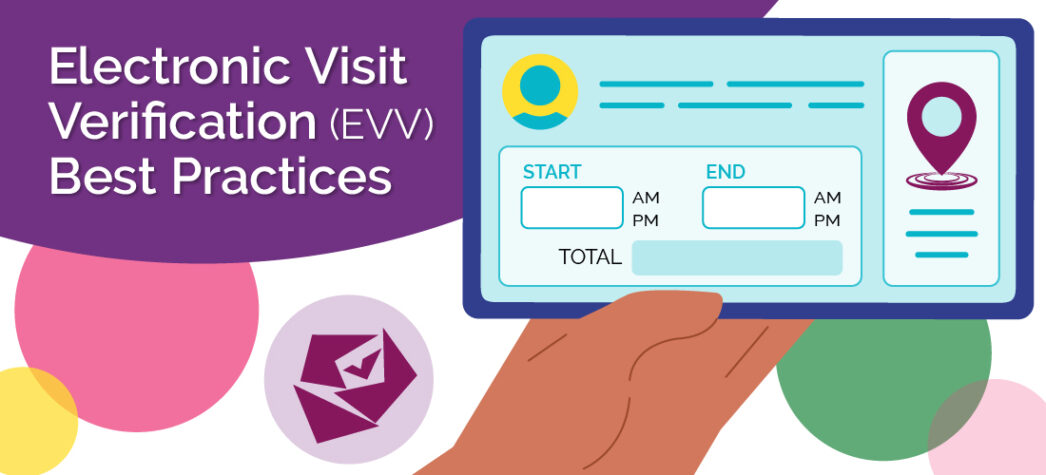
Whether your home care agency is brand new or has been around for decades, your office may not be getting the most out of Electronic Visit Verification (EVV). From compliance issues to improving workflows, we’ll cover EVV best practices that could save your staff time and sanity.
The EVV Trend in Home Care
Even if EVV is not mandated in your state or for your agency’s particular services, it’s essential to understand how it works. Should your agency ever decide to expand to serve Medicaid clients or to use EVV to ensure your caregivers are clocking in and out on time, having a foundational understanding of how it works will give you a leg up.
Looking at home care industry trends, especially those related to Medicaid, many experts foresee that EVV requirements will soon expand to the Veterans Administration (VA). In addition, many Long Term Care Insurance (LTCI) providers already require EVV.
Home care agencies currently billing the VA and LTCI should pay close attention to what’s going on with EVV in Medicaid to prepare for possible changes to services they are currently billing.
Improve Internal Processes for Home Care Companies
If you don’t understand EVV, you likely can’t fully grasp its benefits. Let’s address a few:
- EVV is a tool that ensures your agency is billing properly and getting reimbursed correctly.
- EVV saves time and improves workflow. Instead of hunting down caregivers and hardcopy timesheets, checking their hours, and then manually inputting them into your billing and payroll system, EVV automatically imports caregiver hours into your home care software.
- EVV provides clarity on what you pay and bill. Agencies that use EVV find that the questions that once plagued their business with constant slowdowns will disappear.
- EVV resolves employee disputes by confirming the locations and times when caregivers clock in and out. With data, agencies are protected.
Caregiver ‘Buy-In’ for EVV Is Vital
The best way to teach caregivers how to use a caregiver app for EVV is to learn it yourself. We encourage agencies to have their office staff utilize the app to clock in and out first.
Once office staff are comfortable with the process, bring your caregivers to the office for in-service training. Ask everyone to download the app simultaneously, clock in together, look at tasks, go through schedules, and then clock out together.
This will put everyone on the same page, and office staff will be able to troubleshoot any problems on-site rather than when caregivers are out in the field.
Getting buy-in from your caregivers is the best way to start implementing EVV for your agency. Also, explain the importance of taking screenshots of any problems so the agency can share them with the software vendor for troubleshooting.
Benefits of EVV for Caregivers
The benefits of caregivers using EVV are often overlooked because agencies focus on compliance and regulations.
While EVV tools are partly for compliance oversight, they are also intended to help caregivers do their jobs better. With a caregiver app, caregivers can do the following from their phones:
- Get to their client’s location through mapping services
- Read communications from their agency without going into the office
- See their schedules at a glance
- Accept or decline additional shift offers
Best Practices for Managing EVV
How often is your staff checking EVV? While EVV should be monitored at least once a day, the best practice is to check it 2 to 3 times daily (morning, afternoon, and evening).
Understand that GPS location for caregivers is incredibly accurate, plus or minus 50 feet. That being said, client location is not always as accurate.
In rural areas, it’s common to have very long driveways, and the location is at the mailbox rather than the client’s actual home. If you have clients in large buildings like apartment complexes or assisted living communities, similar issues could cause issues with your EVV.
Your software partner should be able to handle such situations with custom GPS coordinates. It’s a retrospective problem, but the advantage is that when a caregiver clocks in and out at one of those locations, you can tell your software to look elsewhere for all EVV at that location.
While many agencies currently use EVV, some felt rushed into using electronic visit verification due to state rollouts that might not have provided appropriate training. No matter where you are in your agency’s EVV journey, it never hurts to review best practices and freshen up your memory or possibly take away something new.
Find more information about our Home Care Software Solutions.
 About David Goldwyn
About David Goldwyn
Director of Customer Success
Rosemark
Guest blog for corecubed
With nearly 20 years in customer service and support roles, David loves to help customers find solutions to their problems. Partnering with clients is what he loves most about his job. His experience and passion for helping others succeed foster an atmosphere that encourages learning and growth. Adept at leveraging existing skillsets, he takes pride in helping his clients establish great routines and problem-solve challenging issues. No matter how complicated the problem, David likes finding the answer.

